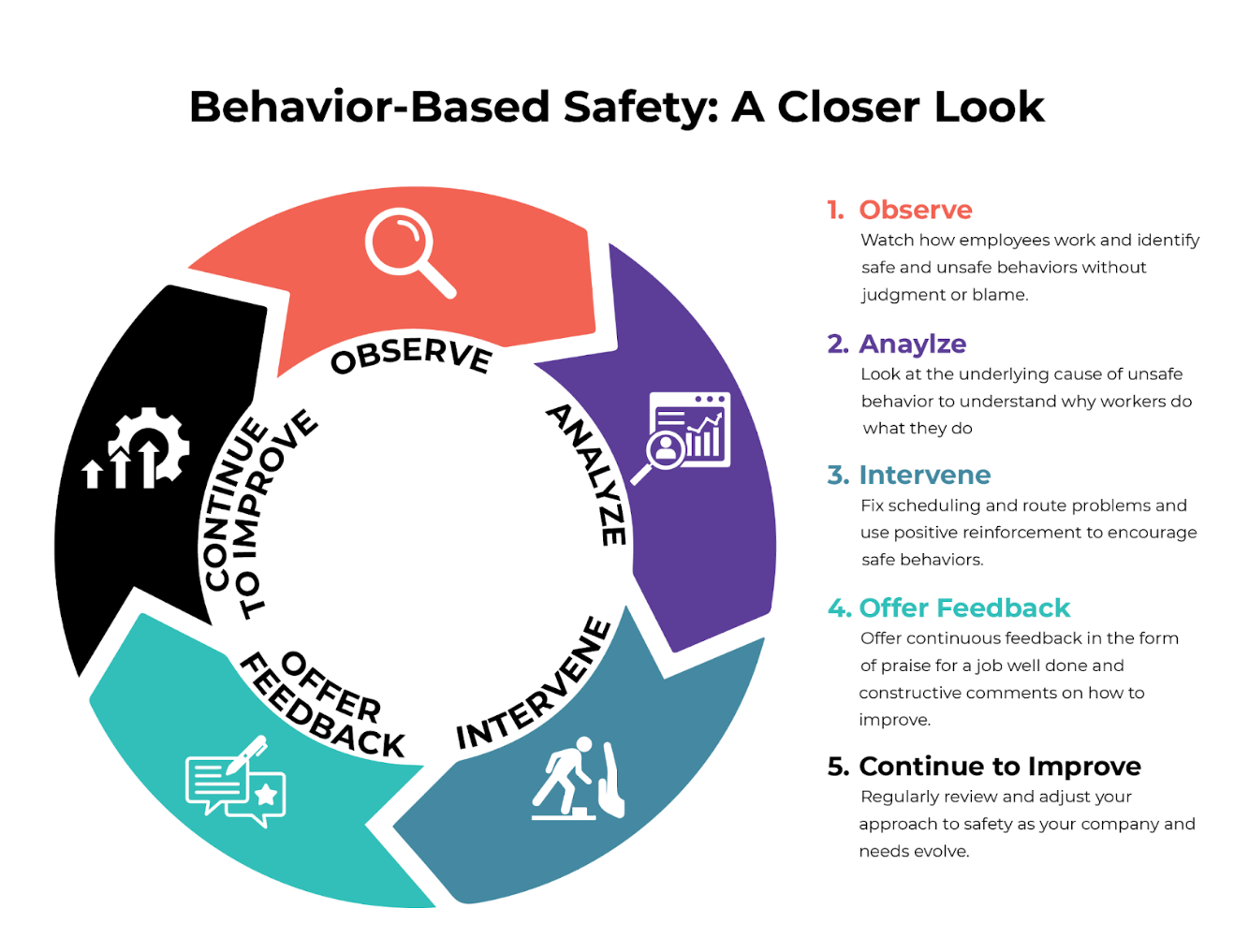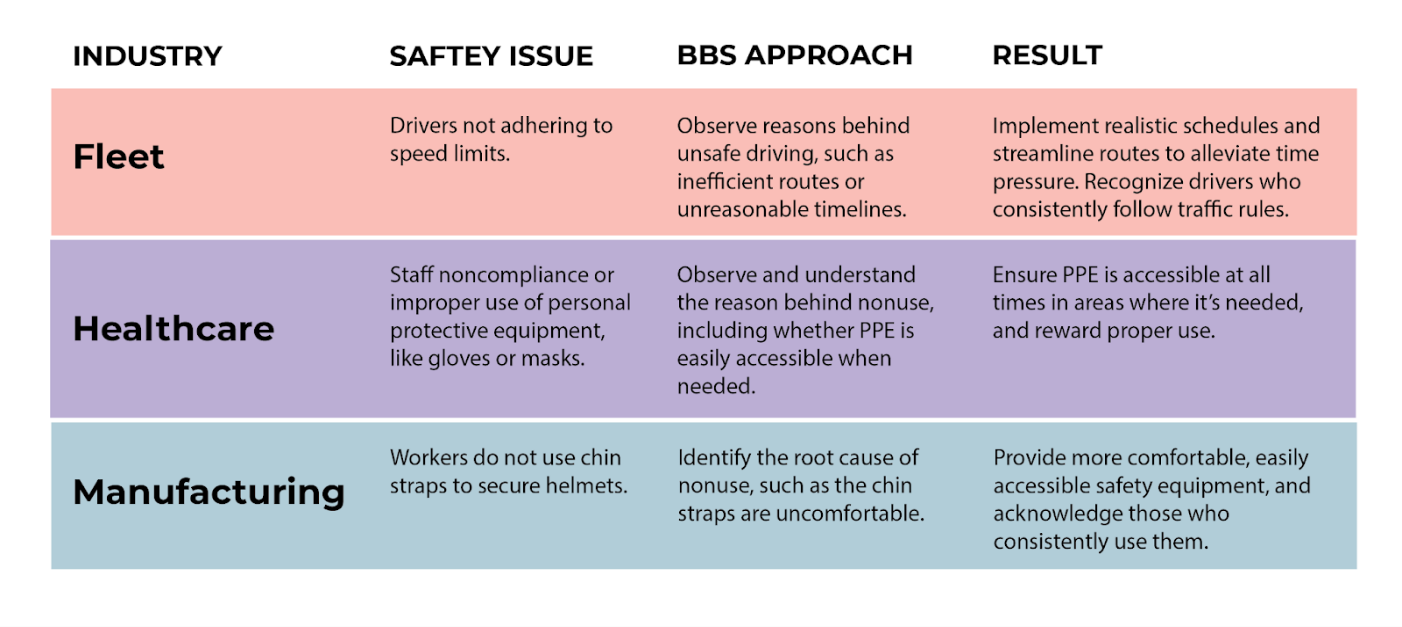
Building a Robust Safety Culture in Healthcare
In 2022, U.S. employers reported 2.3 million nonfatal injuries in private industry, up 4.5 percent from 2021, according to a Bureau of Labor Statistics report. Sectors that reported the most injuries include healthcare, transportation, and manufacturing.
Even with safety protocols in place, incidents happen, and workplace injuries remain a concern. The solution, though, goes beyond more training, policies, or caution posters. Comprehensive workplace safety requires looking at safety not as something to enforce but as a foundational pillar of your culture. That’s where Behavior-Based Safety comes into play.
In this article, we’ll explore the fundamental principles behind Behavior-Based Safety (BBS) and how focusing on employee engagement and continuous improvement through feedback and positive reinforcement can build a lasting culture of safety.
What Is Behavior-Based Safety?
Behavior-Based Safety (BBS) is an approach to safety management that focuses on workers' behavior as the cause of most work-related injuries and incidents. The core idea behind behavior-based safety training is that by observing, guiding, and improving on-the-job behaviors, workplaces can prevent incidents and promote a safety culture.
“It’s a behavioral and actionable approach to creating safer workplaces and workplace culture,” says Alison Betz, ABA Technologies vice president of clinical product and senior consultant.
Here’s how it works:
- Pinpoint key practices that minimize injury risk.
- Create checklists for peer observation.
- Use checklists to have employees focus on which safe behaviors to reinforce.
- Gather observational data for analysis by the team.
- Formulate action plans to tackle barriers to safety.
- Implement strategies for ongoing safety enhancement.

Fundamental Principles of BBS
One of the primary markers of behavior-based safety training is a focus on seeking to understand why unsafe behavior occurs. If a worker makes a mistake, rather than jumping to conclusions or applying a certain consequence, BBS dives into the processes that failed leading up to the mistake.
This is done through consistent observation, providing positive feedback for safe behavior, and engaging employees at all levels to commit to safety as a shared value.
We asked Betz to offer her insights on what sets BBS apart and how organizations—whether fleet, healthcare, or manufacturing—can use these tools to build a self-sustaining culture of safety within their organizations.
Pinpointing Behaviors through In-Depth Assessment
One of the fundamental elements that sets BBS apart from other safety programs is the “pinpointing of behaviors and what we’re targeting,” according to Betz. She explains, “You focus on behaviors that are going to be observable and measurable.”
Behaviors can be identified by reviewing the last two to five years of incident reports, near-miss reports, and OSHA reports, along with interviews and observations from employees.
“You identify your targets mostly based on incident reporting and informative [interviews], then you can identify how you’re going to adjust and what interventions you’re going to add to your observation based on the reports.” says Betz.
Customized Observation That Focuses on Leading Measures
When it comes to observing behaviors, BBS focuses on what Betz calls “leading measures,” or the human behaviors that lead to incidents (lagging measures). In focusing on leading rather than lagging metrics, the goal is to catch and correct risky behavior before it results in an incident or mistake. This is a shift from more reactionary safety metrics that address incidents or mistakes after they’ve already happened.
“Other approaches lean toward a one-size-fits-all kind of thing,” Betz says. There may be an incident, and the response is to implement blanket training, send out a safety memo, or make a wide-reaching change to a policy rather than address the root cause of the incident.
Positive Reinforcement to Encourage Real Change
Betz has historically put extra emphasis on positive reinforcement in her BBS work.
When the default response to any accident, mistake, or incident is a warning or a write-up, “that’s going to have a very negative impact on the culture in general, and safety culture in particular,” Betz says.
It will also lead to a lack of reporting, which may cause incident numbers to go down but does nothing to increase safety.

Engagement Across All Levels
One key component of a robust behavior-based safety training program is building a safety committee filled with buy-in champions. These are people who are passionate about safety and can influence their peers positively. They are instrumental in identifying safety issues, promoting safe practices, and reinforcing BBS principles and practices long-term—and they aren’t solely executives or managers.
“We actually recommend that you have people across all different levels and departments be a part of the safety committee,” Betz says. “As an executive or a leader, you aren't the person who's actually loading the truck or transporting the patient, so sometimes you miss things.”
The Role of Leadership
While engaging workers at all levels is critical, effective leadership from the top down is key to success in BBS.
“For cultural change, you have to start at the top,” Betz says. “If you don't have the buy-in at the leadership level to support safety as a value, it's going to be difficult.”
Not only do safety leaders need to walk the safety talk, so to speak, but they also need to be able to communicate the company’s values and vision as they relate to safety. Safety should be at the center of every presentation and discussion on values and included as a top agenda item in every meeting.
How BBS Works to Improve Safety
Studies have found that behavior-based safety training typically results in 20 percent to 50 percent improvement in safety.
Beyond the numbers, the true power of BBS lies in its ability to build a better safety culture by transforming the way humans behave. By focusing on human behavior, encouraging open communication, and involving everyone from frontline workers to top management, BBS creates a sustainable safety culture that builds on itself and generates measurable rewards in the form of a safer workplace.
How BBS Works Across Industries
BBS is customizable and highly adaptable to the unique needs of various industries. These are just a few examples of how Behavior-Based Safety training can help make workers safer.

Behavior-Based Safety Series
This Behavior-Based Safety (BBS) Series by safety expert, Dr. Terry McSween, equips you with essential tools and knowledge to implement a successful BBS process and foster a robust safety culture in your organization. Learn how to analyze injuries, develop safety checklists, conduct effective observations, and empower your team for continuous safety improvement.








